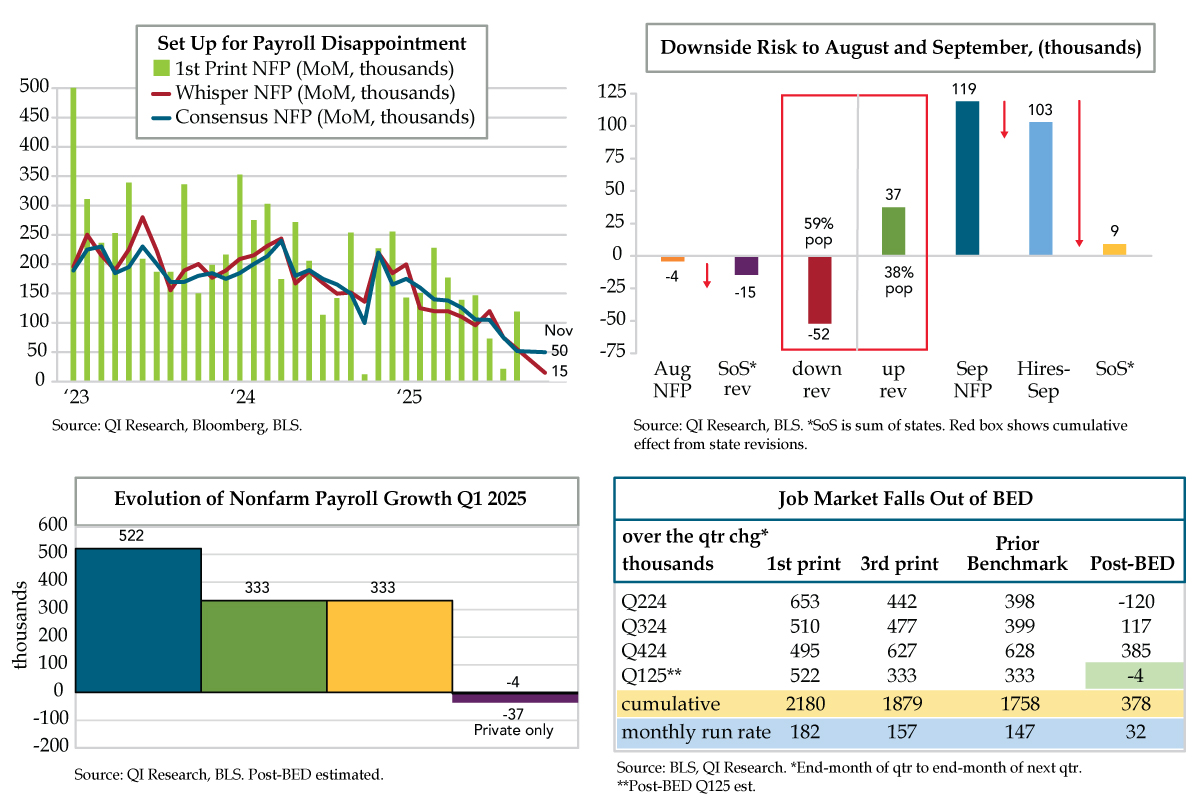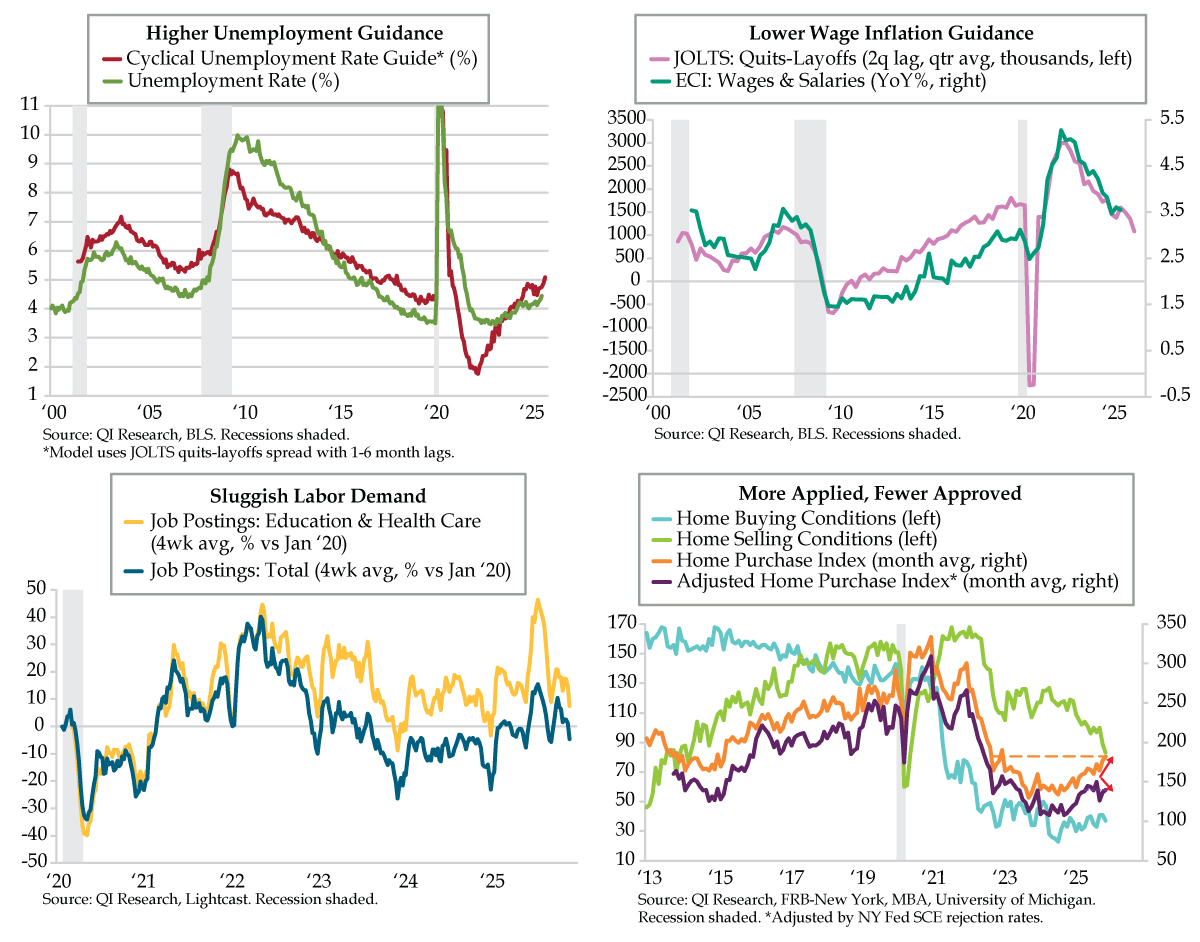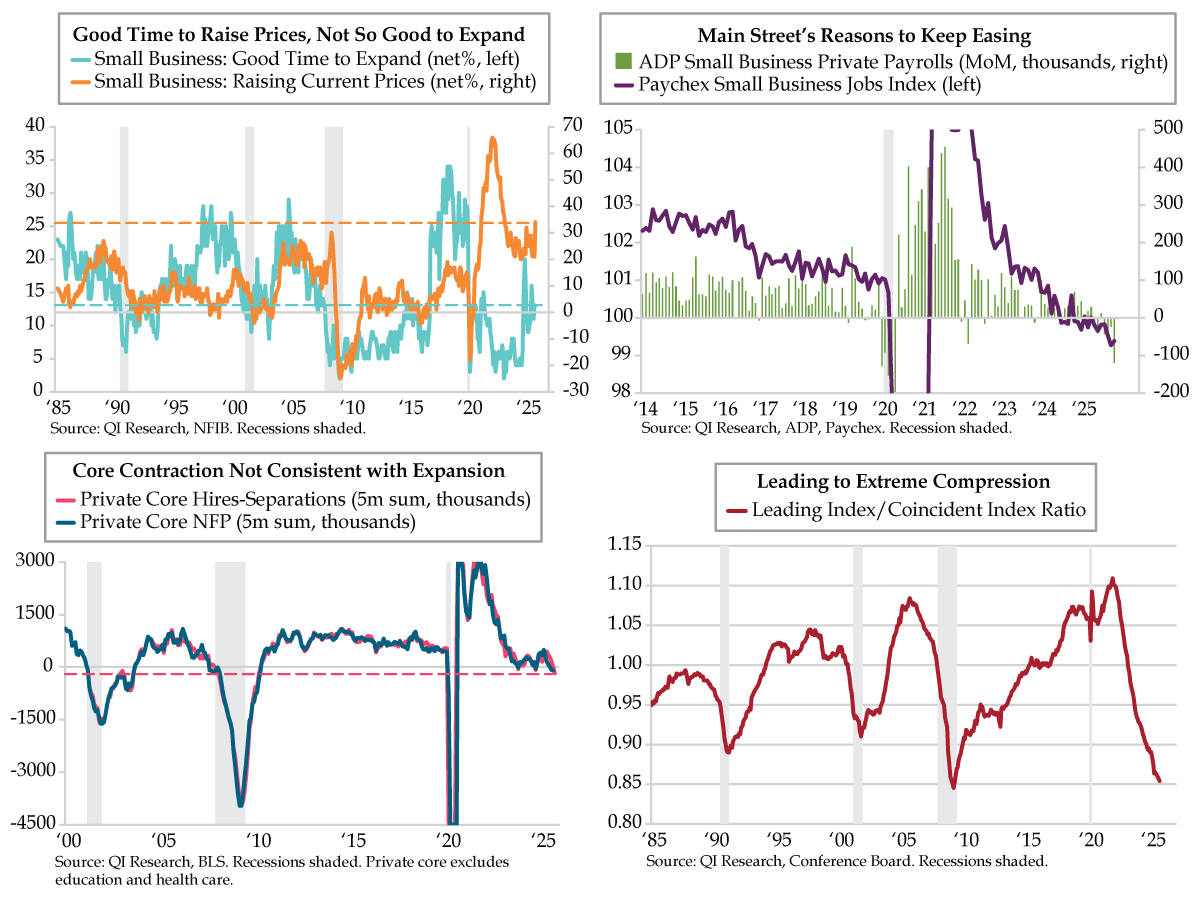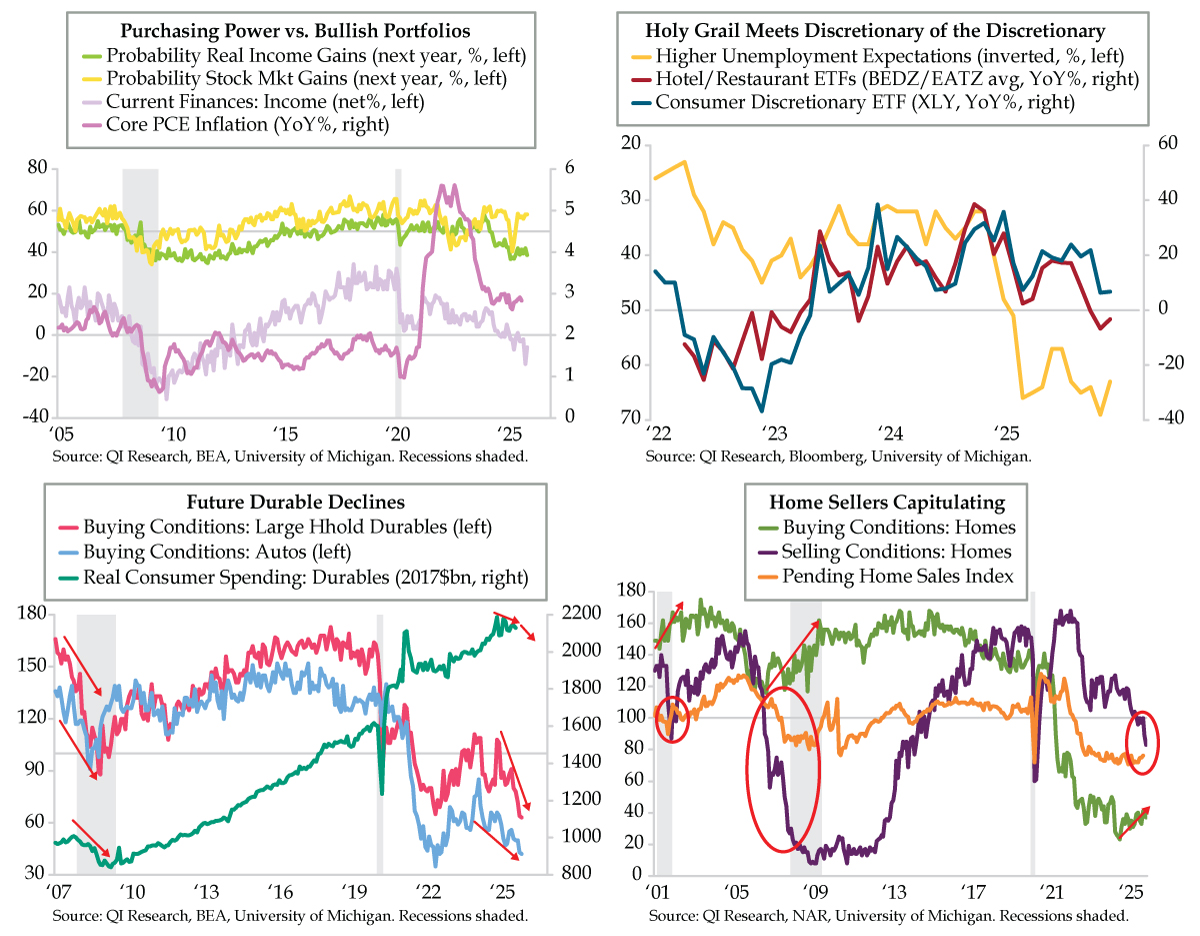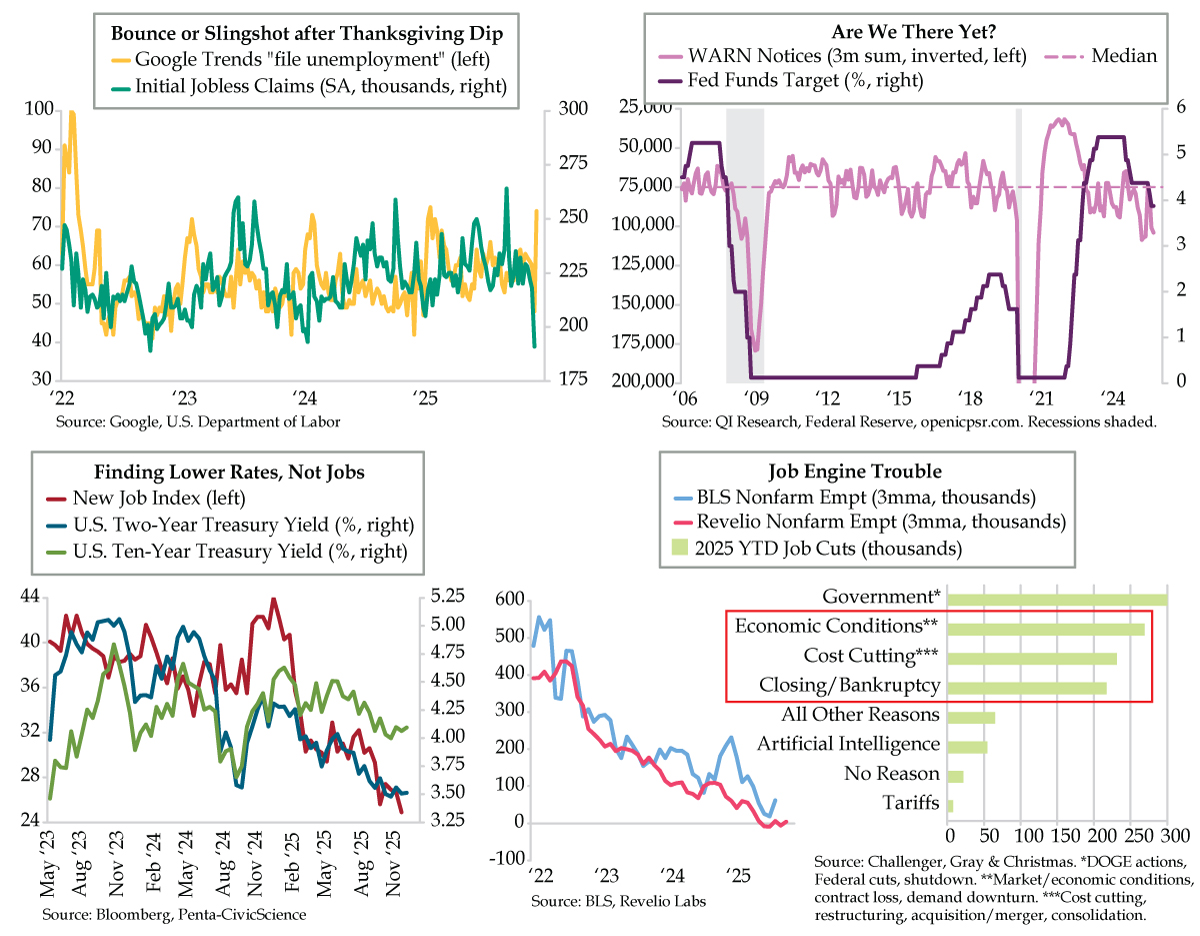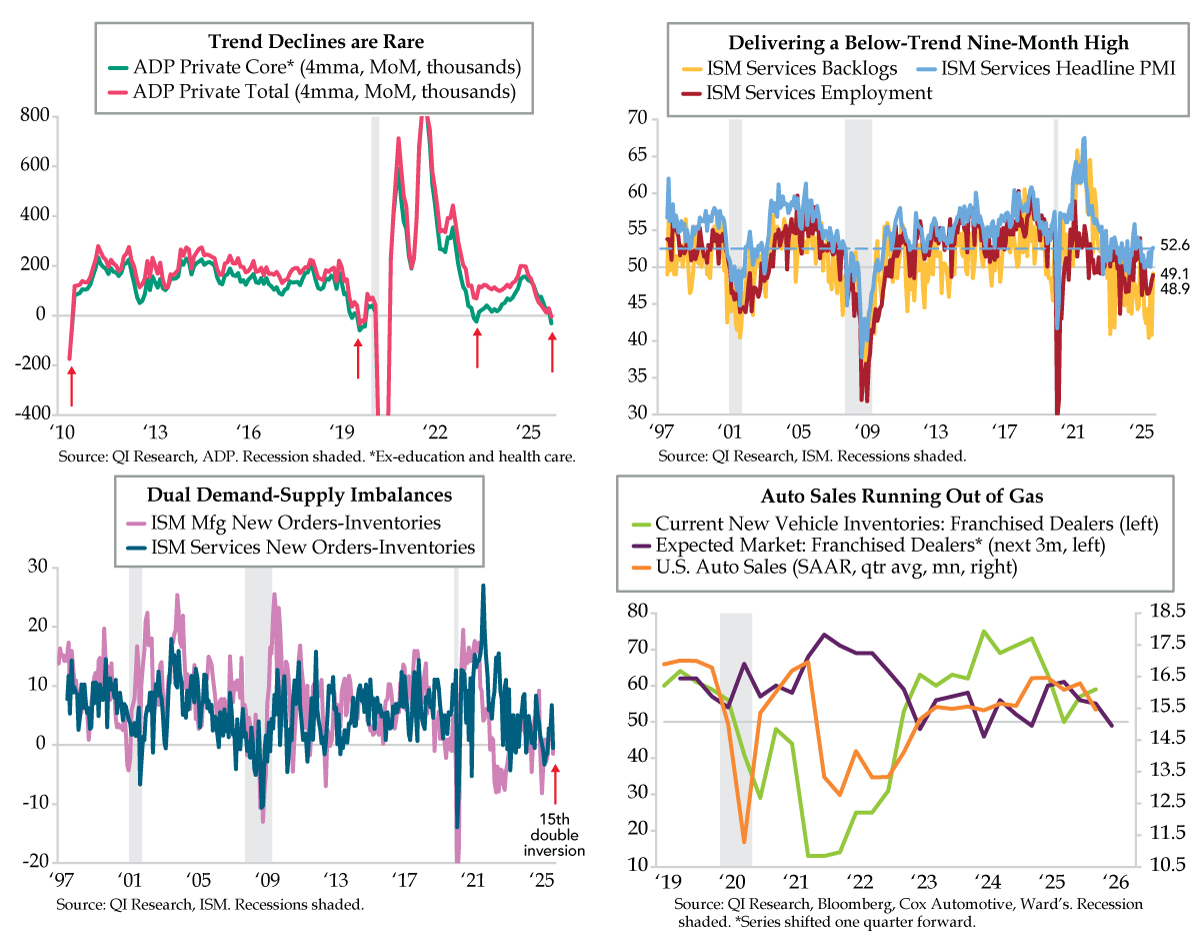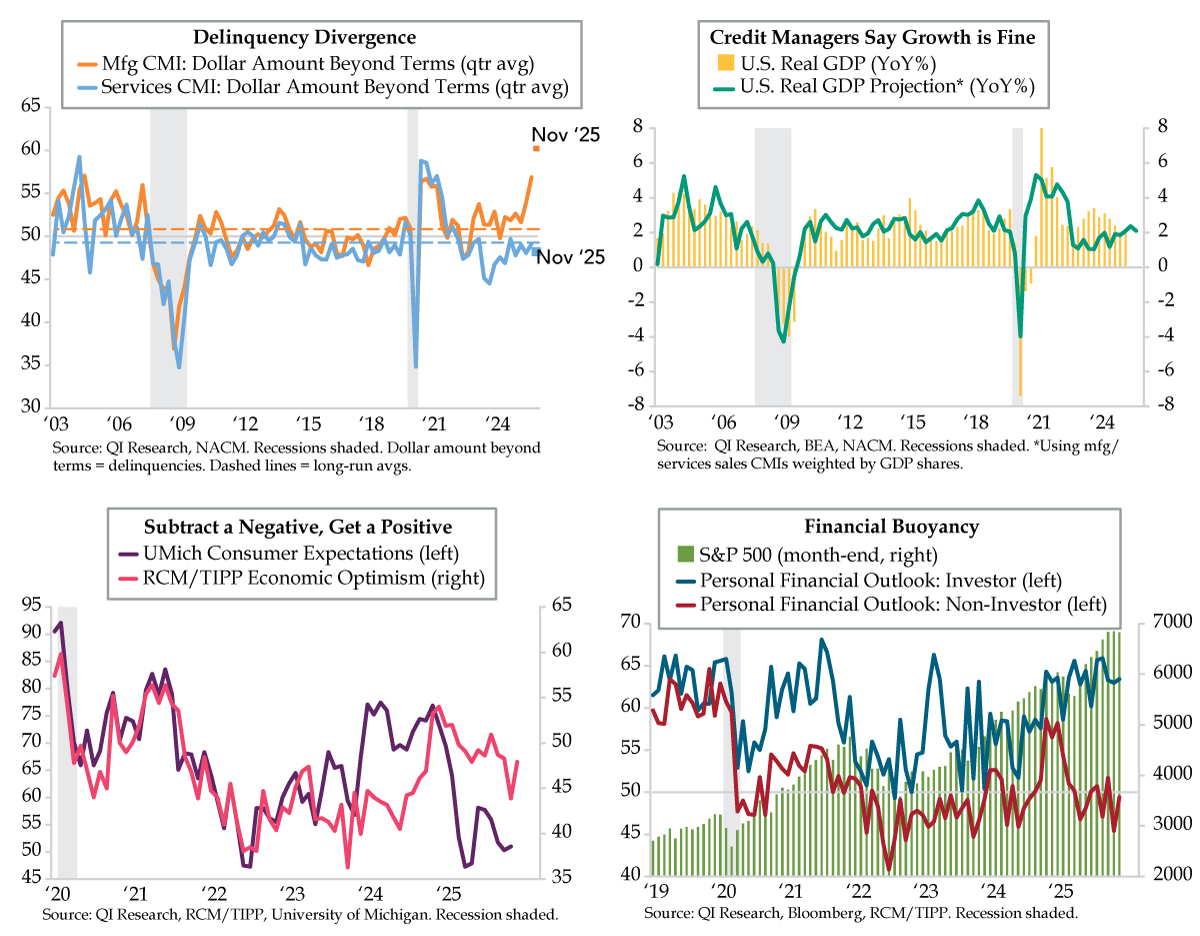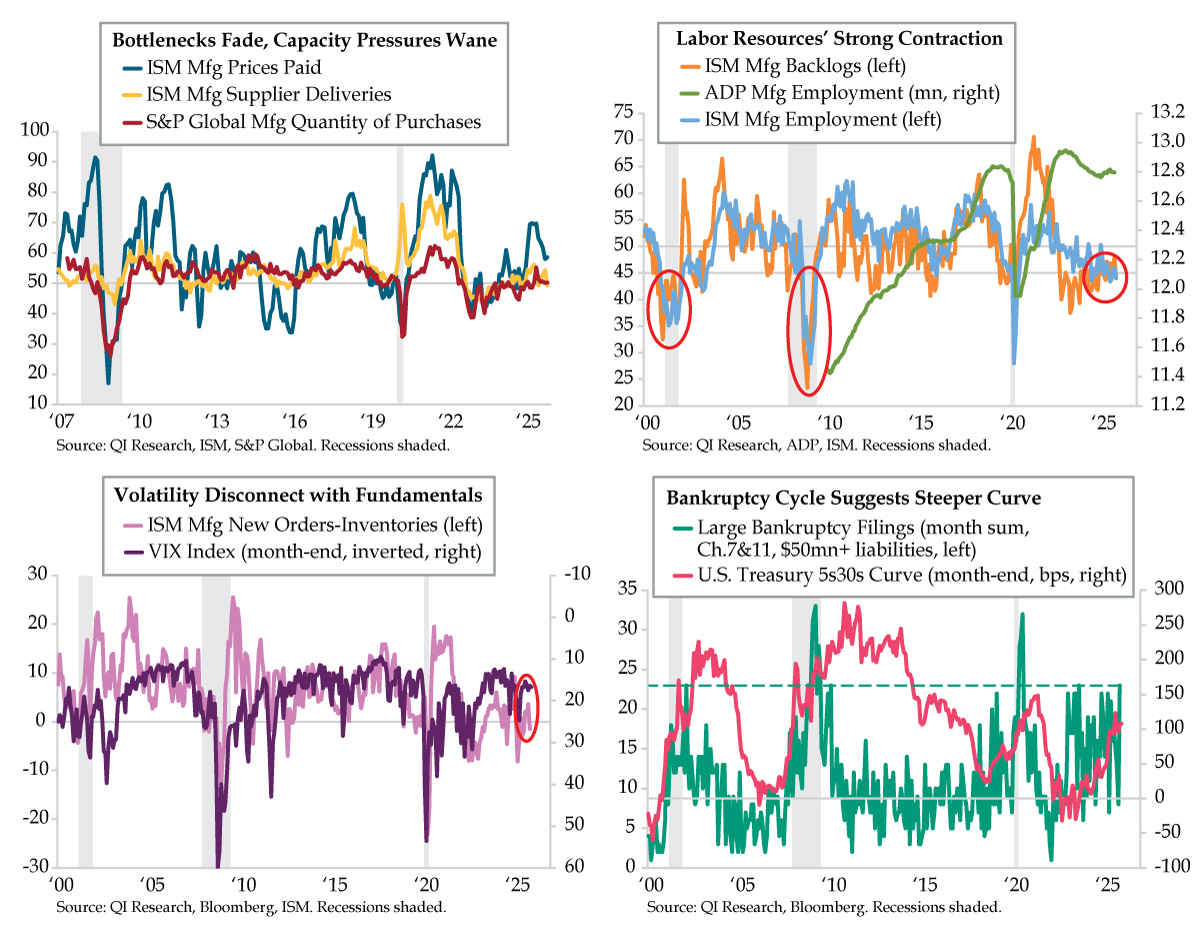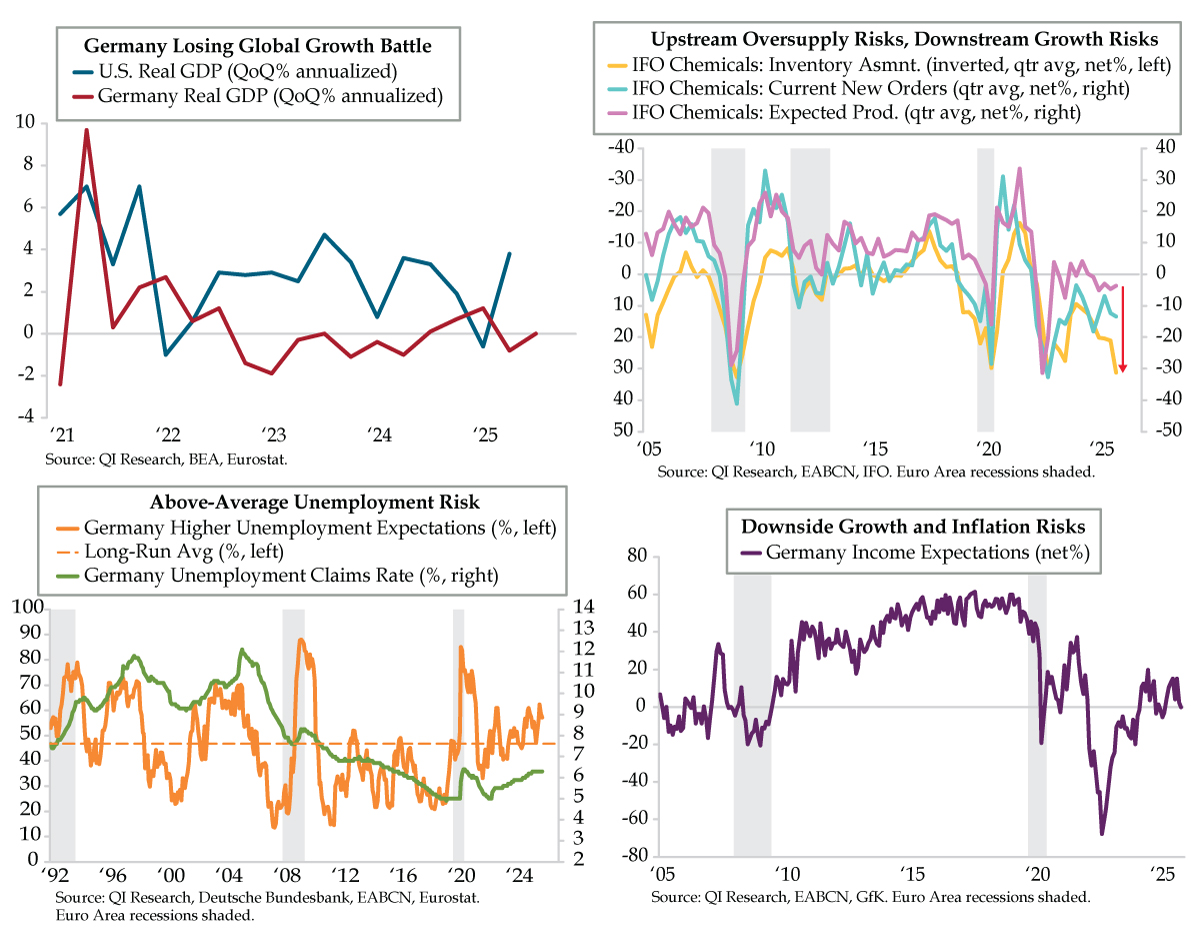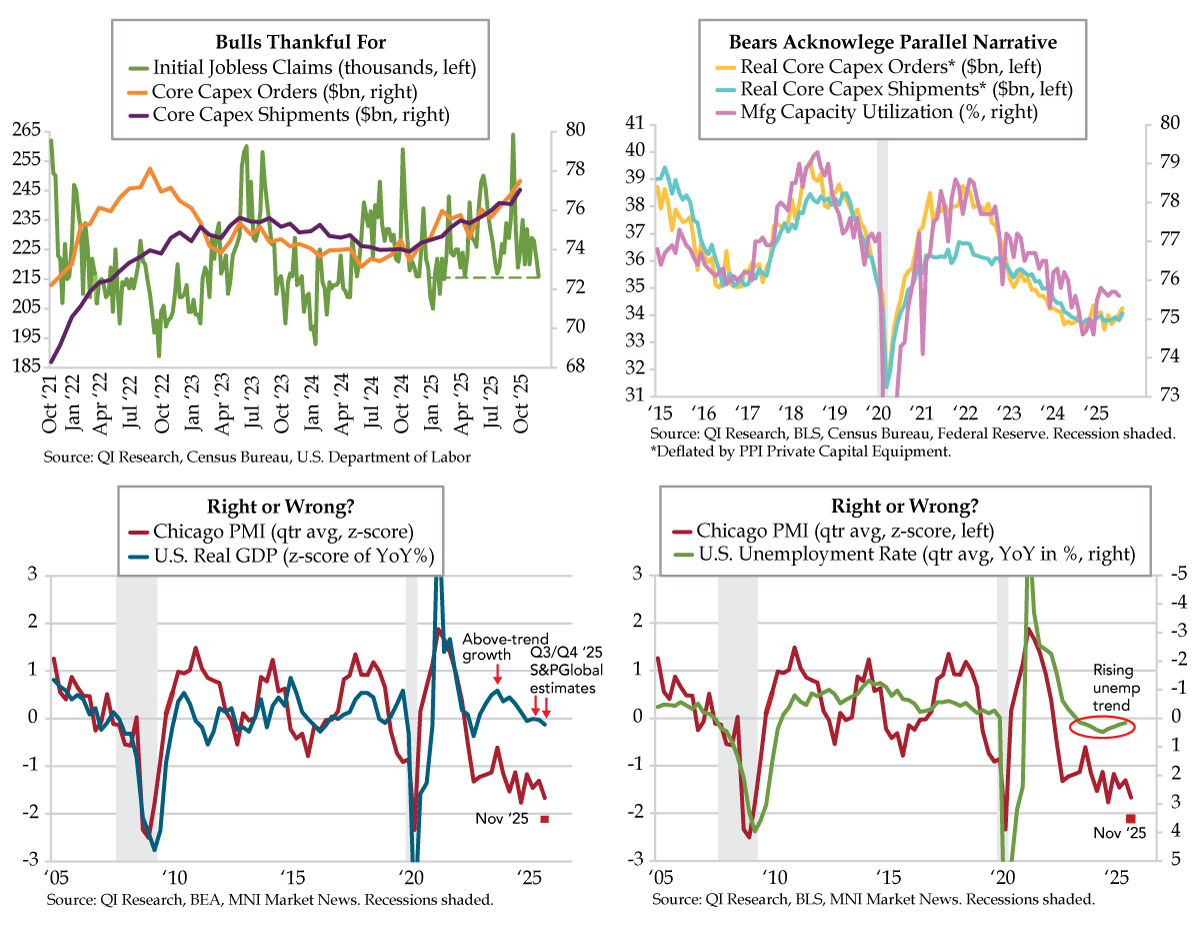QI PRO HOLY GRAIL DASHBOARD
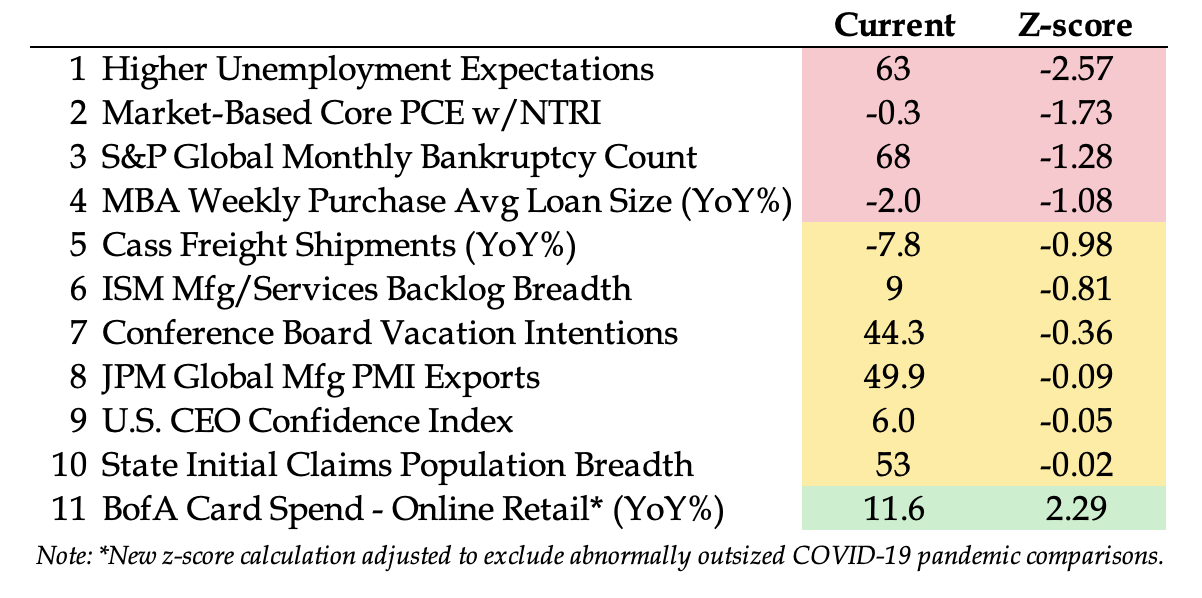
LONG MACRO
Recession probability to rise into 2025’s second half as private demand underperforms. The tariff shock should generate greater risks for a downshift in business investment and a more challenging environment for consumer cyclicals vis-à-vis consumer non-branded noncyclicals.
Manic shifts in U.S. politics harken first a deflationary gully to cross followed by the threat of impeachment and ultimately, a fourth change in administrations in as many U.S. presidential elections, a first in sequential terms since the precipice of the U.S. Civil War. The subsequent pendulum swing will manifest as Universal Basic Income/Modern Monetary Theory, and with it, the secular rise in inflation being prematurely predicted today by those positioned to profit from being short Treasuries.
Saturday Intelligence Briefing— 12.6.25
It was a full olfactory offensive. That’s the best characterization of this past week. Jobless claims plumbed below the 200,000-level setting off a regurgitation in the bond market. As my friends at MacroEdge noted, only a math dolt would even file for unemployment insurance benefits given the economics. Consider the five most populous states of California, Texas. Florida, New York, and Pennsylvania. In the order of the states listed, an Uber driver would make 114%, 80%, 161%, 25%, and 24% more vis-à-vis collecting unemployment benefits. WHY, I ask, would anyone make the decision to be relatively more destitute when they could pick up fares instead?
TACTICAL
RATES:
Short-end and Belly best opportunities for total return. Rally keys off weaker macro. Challenged private demand, higher unemployment and lower core inflation raise Fed rate cut probabilities.
Long-end holds at elevated levels with de facto caps at 4.5% for the 10-year & 5% for the long bond with the term premium supported by fiscal malfeasance exacerbated by falling sovereign revenues and despite diminishing stimulus to the U.S. consumer.
Curve view – Bull steepener in 2025’s second half.
USD:
A sidelined Fed contrasting with most global central banks easing catalyzed a selloff in the greenback. A Fed forced to play catchup could easily thin the massively crowded trade, especially as global trade weakness impairs an open global economy vs. its closed U.S. counterpart.
CREDIT:
• Underweight HY, overweight strong cash-flow IG
• Lower-rated buckets at risk of dispersion with Fed Higher for Longer
• Jobless claims deterioration makes a cautious Street rethink already-wider-spreads 2025 expectations, i.e., up default estimates as bankruptcy cycle speeds up and size
• Fitch’s acknowledgement of cyclical consumer sector “deteriorating” fits this view
EQUITIES:
OW Utilities
OW Fossil Fuel Energy
OW Senior Living
UW Consumer Staples
UW Consumer Discretionary
UW Large & Midsize Banks
OTHER ASSETS:
• USD view supports UW commodities & EM
• Oil is a different story with geopolitical risk ramping (Israel v Iran)
• Long MOVE to capitalize on runaway lending to Nondepository Financial Institutions triggering a credit event
The Feather — Charts of the Week
Saturn Returning
Searching for Old Faithful
Sherpas Guiding the Dismal Science
The 1932 Emu War
Before There Was Social Media, There Were Influencers
The Most-Hated Movie Mogul
Road Tripping ‘Round the U.S. Labor Market
Rare as a Rat in the Kitchen…Cooking
From Centennial to Closing Time
From Rubbernecking to Fading Bottlenecks
The First Lufthansa
“Love to eat turkey, ‘Cause it’s good”


